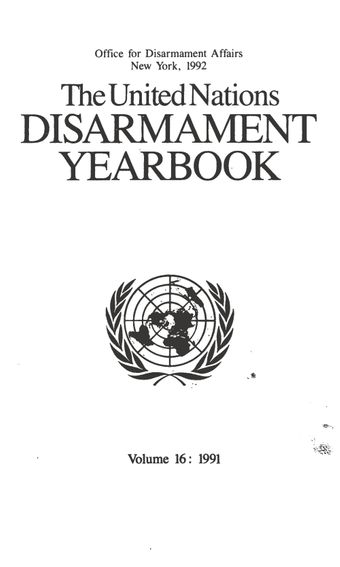Chemical weapons

- Author: United Nations Office for Disarmament Affairs
- Main Title: United Nations Disarmament Yearbook 1991 , pp 249-269
- Publication Date: December 1991
- DOI: https://doi.org/10.18356/26e05fb7-en
- Language: English
The first attempts to eliminate chemical and bacteriological (biological) weapons date back to the Brussels Declaration of 1874 and the Hague Conventions of 1899 and 1907, which banned the use of poisons and poisoned bullets in warfare, and a separate declaration of the Hague Convention of 1899, which condemned the use of projectiles for the sole purpose of diffusing asphyxiating or deleterious gases. Despite these attempts, during the First World War the widespread use of chemical agents caused some 1,300,000 casualties, more than 100,000 of them fatal. Those tragic figures contributed to a new global awareness of the need to prevent chemical warfare and to the emergence of the basic instrument for its elimination, the Geneva Protocol of 17 June 1925. The Protocol prohibits the use in war of asphyxiating, poisonous or other gases and of all analogous liquids, materials or devices, as well as of bacteriological methods of warfare.
© United Nations
ISBN (PDF):
9789210579957
Book DOI:
https://doi.org/10.18356/d46ad216-en
Related Subject(s):
Disarmament
Sustainable Development Goals:
-
From This Site
/content/books/9789210579957s004-c001dcterms_title,dcterms_subject,pub_keyword-contentType:Journal -contentType:Contributor -contentType:Concept -contentType:Institution105
/content/books/9789210579957s004-c001
dcterms_title,dcterms_subject,pub_keyword
-contentType:Journal -contentType:Contributor -contentType:Concept -contentType:Institution
10
5

